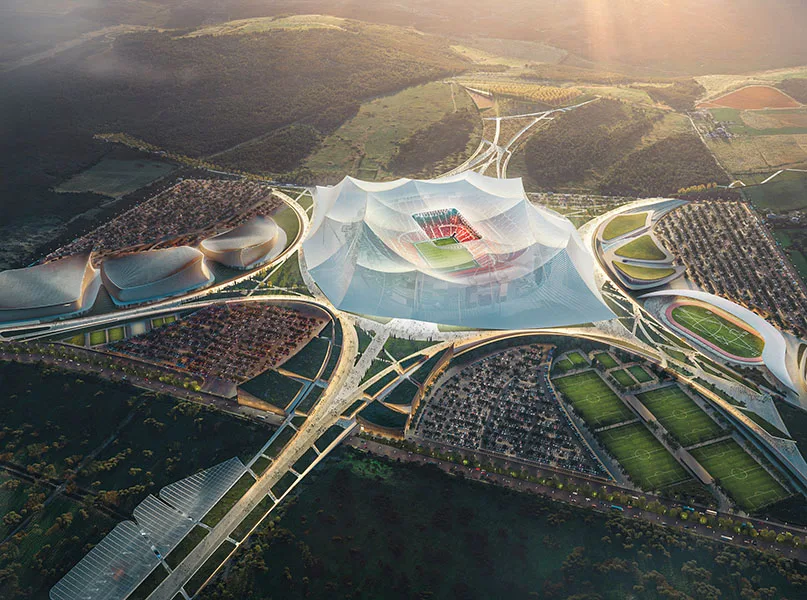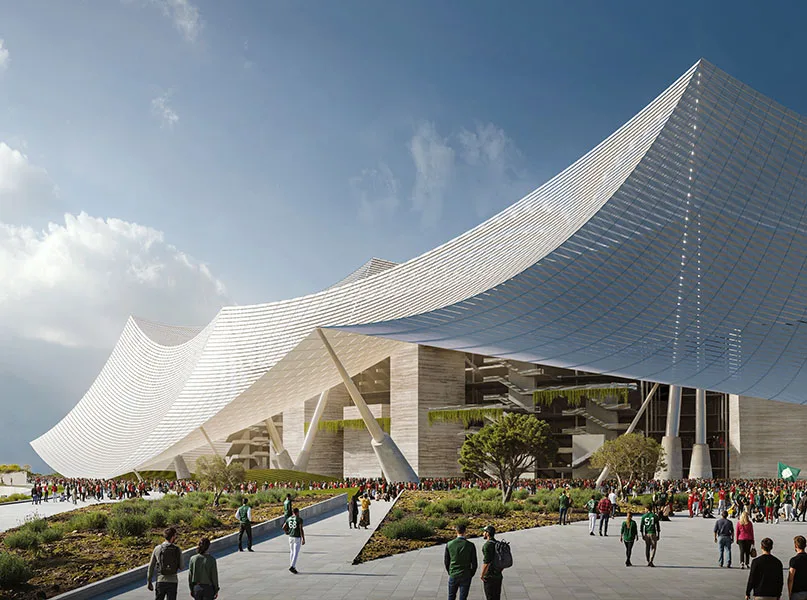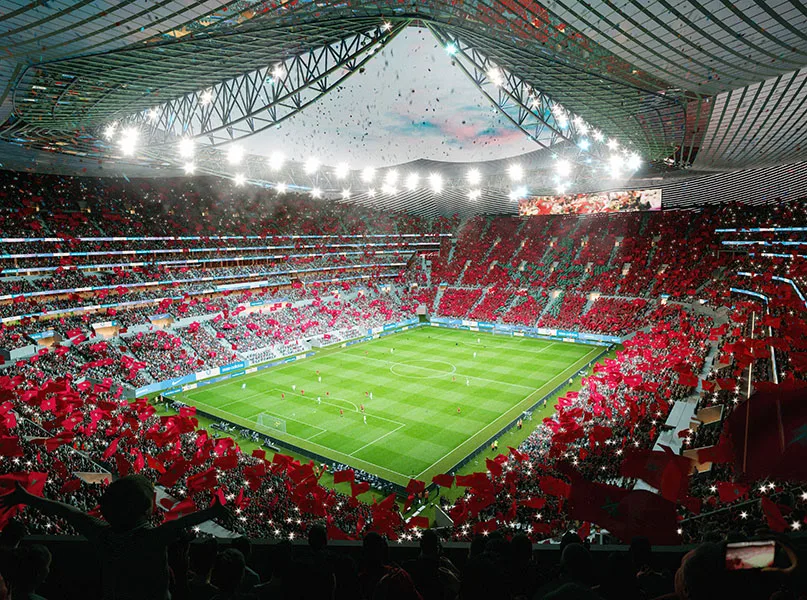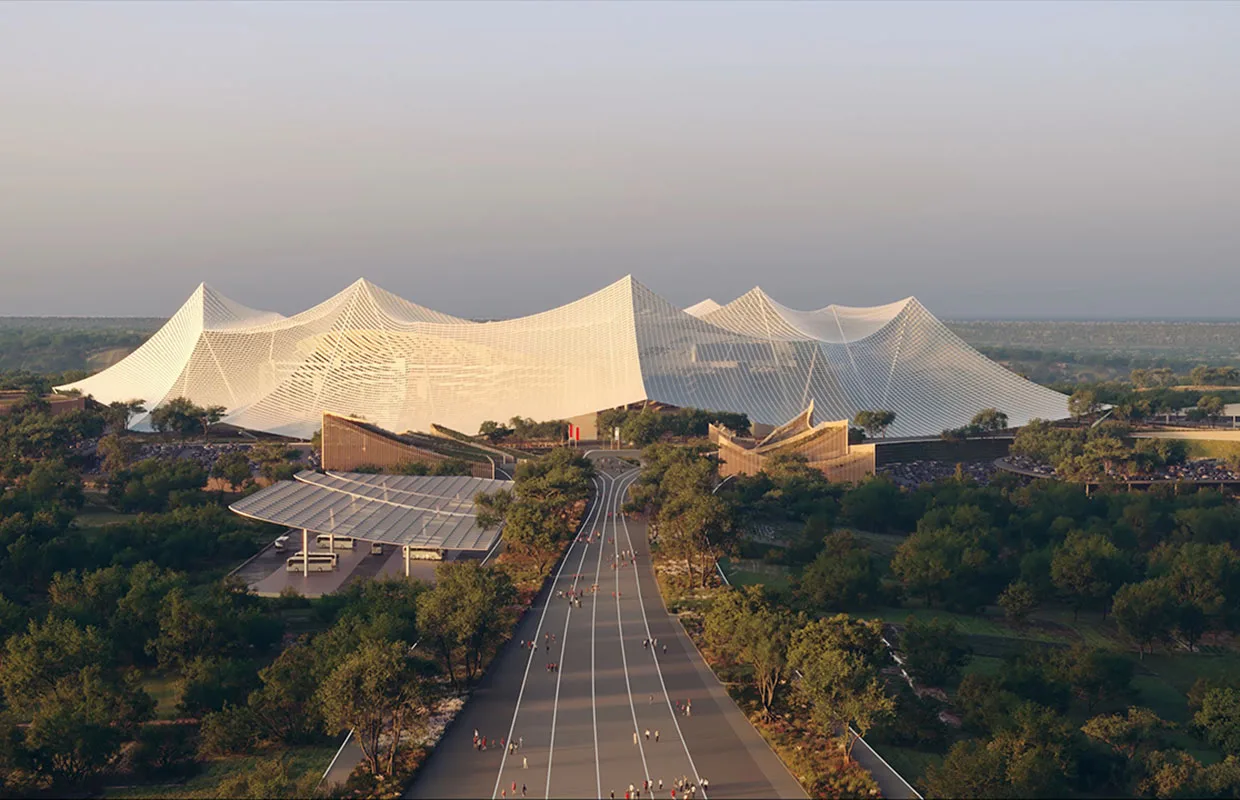MOROCCAN MASTERPIECE
After five unsuccessful attempts to host the World Cup, Morocco has finally been selected to stage the football showpiece in 2030, together with neighbouring Portugal and Spain.
It is only the second time that an African country will host the iconic tournament, 14 years after South Africa held the continent’s first ever World Cup in 2010.
Curiously, the first three games will be played in Uruguay, Argentina, and Paraguay to commemorate the centenary of the World Cup, which was first hosted in 1930 in the Uruguayan capital, Montevideo.
This means that the 2030 World Cup will have a unique global footprint and unite three continents and six countries, inviting the entire world to join in the celebration of the beautiful game and the 100th anniversary of the tournament.
The other 101 games of the expanded 48-team competition will then be played in Europe and North Africa, with the Stade Hassan II in Casablanca, Morocco’s largest city, already being earmarked as a venue for the final.
Named after Hassan II, the King of Morocco from 1961 until his death in 1999, it has an incredible planned capacity of 115,000, surpassing the 114,000-seater Rungrado 1st of May Stadium in Pyongyang, North Korea.

At both ends of the Stade Hassan II, each holding 29,500 general admission spectators, three steep, compact tiers will ensure a vibrant and spectacular atmosphere.
There will also be five levels of hospitality along each of the main stands at the side of the pitch, welcoming 12,000 VVIP, VIP, hospitality, and box guests, including the royal box.
Groundwork preparations are now underway on a 100-hectare (ha) site in the town of El Mansouria, 38 kilometres north of Casablanca, with construction set to be completed in 2028.
Public financing was approved in October last year after the Moroccan government and the Caisse de Dépôt et de Gestion (CDG), a state-owned financial institution that manages long-term savings in the country, signed an agreement that allocated approximately MAD5 billion to construction of the stadium.

ROOTED IN MOROCCAN CULTURE
Conceived by global design firm, Populous, in collaboration with Paris-based architects, Oualalou + Choi, this impressive, eye-catching stadium draws inspiration from the traditional Moroccan ‘moussem’ tents, with the structure set under a grand tented roof that emerges as a dramatic intervention in the forested landscape.
This striking roof will be made from a unique aluminium lattice and supported by a ring of 32 stairways, creating monumental gateways that feature lush gardens.
Positioned on raised platforms 28 metres above ground, these gardens will create an extraordinary spatial experience and an oasis of greenery under the translucent envelope of the roof. This effect will be further enhanced by a series of botanical gardens at ground level beneath the outer reaches of the canopy.
Thus, the Stade Hassan II is deeply rooted in Moroccan culture with its traditions and contemporary expressions. It is also inspired by ancient and primordial Moroccan figures, as well as the topography and landscapes of the country, and embodies the great tradition of hospitality in Morocco.
Providing extraordinary spaces that create exceptional experiences for every fan and visitor, the stadium is a cornerstone of King Mohammed VI’s vision to develop Morocco’s football infrastructure.
The ambitious project also includes investment in local infrastructure to ensure smooth access for spectators, such as improvements to traffic congestion and event logistics.

BRAND NEW HOME
As well as having the ability to stage the 2030 World Cup final and being fully compliant with FIFA regulations and competition standards, the Stade Hassan II will serve as the brand-new home of two local football clubs – Raja CA and Wydad AC – replacing the Stade Mohammed V that they currently occupy.
This will ensure the stadium remains in use after the World Cup ends, preventing the issue of ‘white elephants’ when stadiums or other large infrastructure projects that are expensive to build and maintain become disused or obsolete after a major sporting event.
It will also be used by the Morocco national team, whose historic run at the previous tournament held in Qatar prompted the Royal Moroccan Football Federation (FRMF) to take the lead in hosting major football events, as it became the first ever African team to reach the semi-finals.
Indeed, as well as the 2030 World Cup, which it will automatically qualify for as co-hosts, Morocco will also be staging the African Cup of Nations for the second time in 2025.
Playing a central role in Morocco’s successful joint bid to co-host the World Cup, the Stade Hassan II will be a truly iconic landmark venue for Morocco and football itself, becoming one of the greatest stadiums on the planet once it has been built.






























